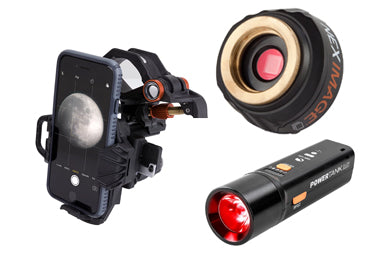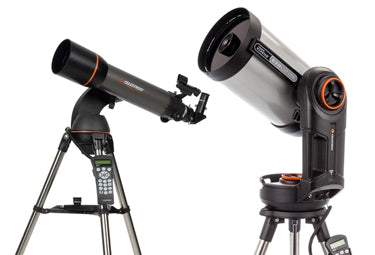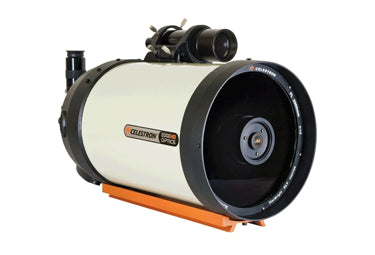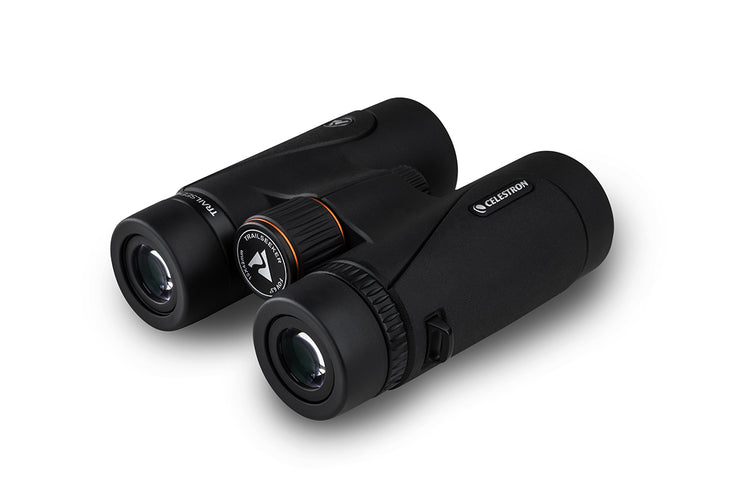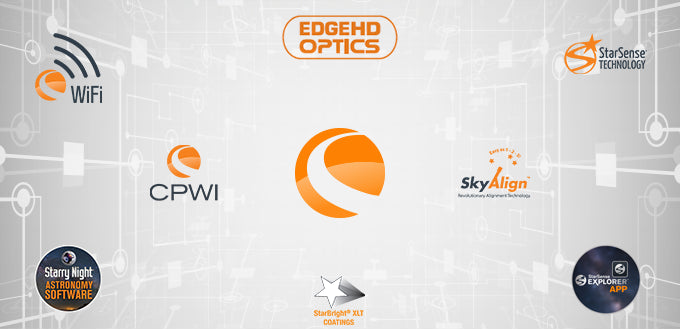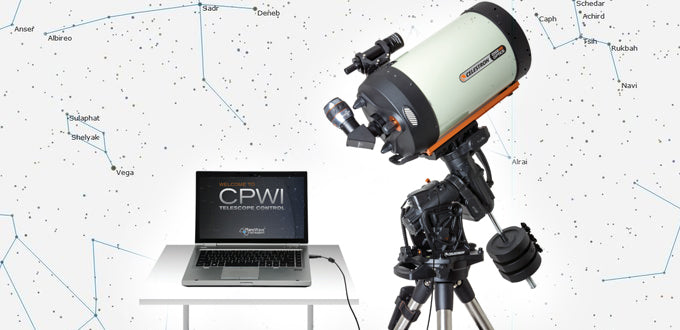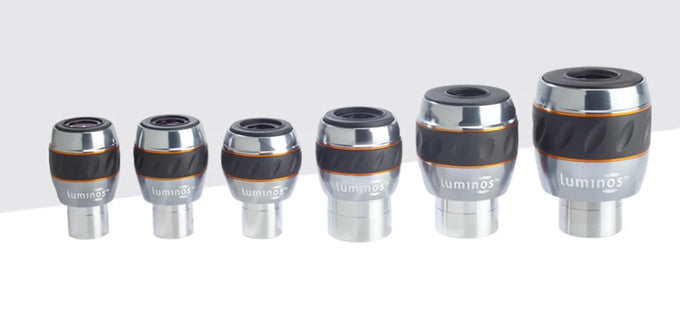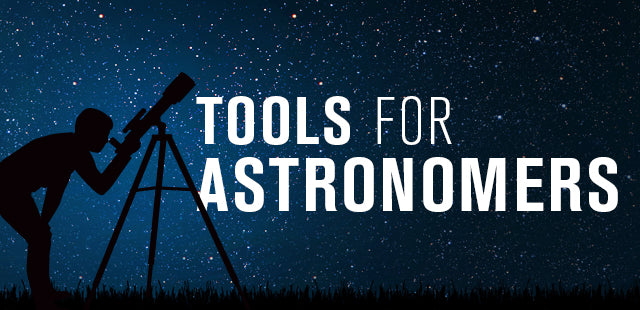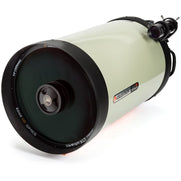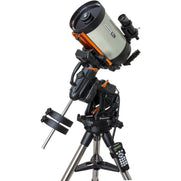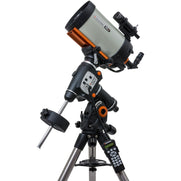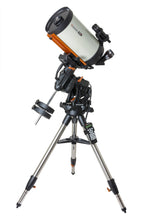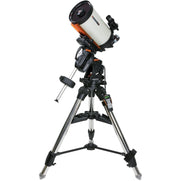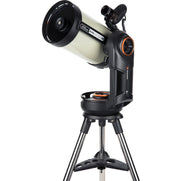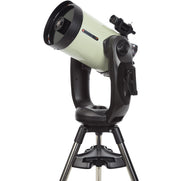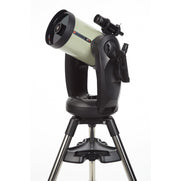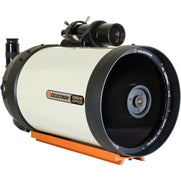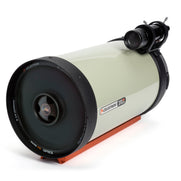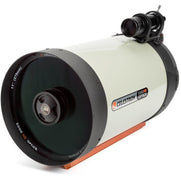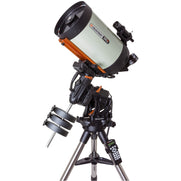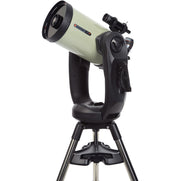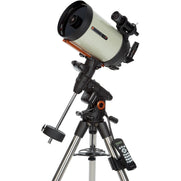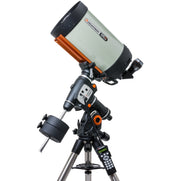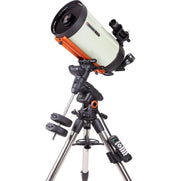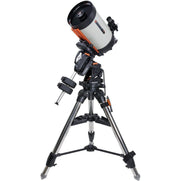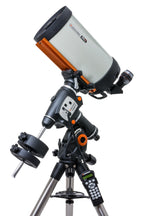EdgeHD Optics
EdgeHD is an aplanatic flat-field Schmidt optical system designed to produce aberration-free images with pinpoint stars all the way to the edge of the field of view of today’s largest imaging sensors and wide field eyepieces. EdgeHD virtually eliminates both field curvature and off-axis star coma, providing an astrograph-quality system at a fraction of the price of competitors.
EdgeHD optical tubes are sold separately or paired with our most popular telescope mounts.

EdgeHD Optical Tubes and Telescope Setups
True Astrograph Quality
Many optical designs advertise themselves as “astrographs,” but only produce pinpoint stars across a curved focal plane. Even when focused sharply in the center of the field of view, this curved plane cannot bring stars at the edges into focus. The wider the field of view, the more pronounced this defect becomes. This may be acceptable for some visual observing, but when a curved plane is paired with the flat sensor of a digital camera, stars become noticeably out of focus at the edges.
EdgeHD optics produce a focal plane more than three times flatter than a standard Schmidt-Cassegrain telescope and dramatically flatter than other competing coma-free designs, guaranteeing you visibly sharp stars all the way across the imaging sensor.

A curved focal plane cannot produce consistent results on a flat CCD chip. Stars will appear out of focus at the edges.
A DIFFERENCE YOU CAN SEE
Compare the two images of M3 below. The first was taken with a competing coma-free optical design, the second with EdgeHD. Both images were taken with the same 35 mm chip (42 mm diameter focal plane) camera under the same conditions.
When focused on-axis, both images appear to be sharp in the center. But in the first image, as you examine the stars closer and closer to the edge, the stars become larger and less focused. Finally, at the very corners, the stars are so defocused that they appear as rings instead of pinpoints.
Now look at the second image. As you move from the center outward, the stars retain their focus from edge to edge, appearing as crisp, solid points of light.

Fig. 1: The competing coma-free design, when focused on the axis, shows sharp stars in the center of the image, but dramatically out-of-focus stars (rings or donuts) at the edges.

Fig. 2: EdgeHD produces a consistent, sharp focus across the entire FOV.
IMPROVED PERFORMANCE FOR BRIGHTER, MORE DETAILED IMAGES
Superior edge performance not only creates rounder, more pleasing stars, but actually improves the resolution and limiting magnitude compared to telescopes of equal aperture.
Celestron’s high definition optics let you resolve smaller spot sizes all the way to the outer edge, revealing finer detail and greater contrast. Compare the two cropped images below, both taken with a 37 mm chip (52 mm diameter focal plane) camera.

Fig. 1 (left): The off-axis coma inherent in many optical designs (such as the SCT shown above) distorts star images and compromises resolution.
Fig. 2 (right): EdgeHD focuses sharply across the entire FOV, revealing fine detail lost with other systems.
What’s more, EdgeHD optics give you smaller, more concentrated stars so you can see fainter magnitudes than with other equally-sized telescopes. Poor edge quality can spread out starlight so much that the brightness of a star appears the same as the sky background, making it undetectable to your eye or camera. With EdgeHD optics, you can capture the faintest of galaxies all the way to the corner of your full-frame camera chip. Compare the two cropped images below, both taken with a 37 mm chip (52 mm diameter focal plane) camera.

Fig. 1 (left): In telescopes that exhibit off-axis coma, faint starlight can go unnoticed at the edge of the field of view.
Fig. 2 (right): EdgeHD optics resolve faint detail missed in telescopes of equal aperture.
MECHANICAL FEATURES
The EdgeHD tube features an innovative mechanical design to ensure you get the most from your optics each and every night.
Mirror support
Flexible tension clutches hold the primary mirror in place and reduce image shift. The flexible rods hold the mirror in place without putting any force or pressure on the mirror assembly, keeping your target centered in the eyepiece or chip.
Tube vents
Cooling vents located on the rear cell allow hot air to be released from behind the primary mirror. Each vent has an integrated micromesh filter guaranteed to let warm air out without letting dust in.
Fastar versatility
EdgeHD is the most versatile imaging telescope available today. At its native f/10, you can achieve the image scale necessary to capture the smallest of deep-sky objects. To increase your field of view without sacrificing performance, add the optional EdgeHD reducer lens. Each one is custom-made for your size EdgeHD optical tube and brings your focal ratio down to f/7. A Barlow lens provides additional magnification for high-resolution planetary, lunar, and solar imaging. And, of course, all EdgeHD optical tubes are Fastar-compatible for ultra-fast f/2 wide field imaging. Each EdgeHD tube is fitted with a removable secondary mirror and is opto-mechanically aligned on a laser bench to ensure it is axially symmetric in any configuration.
Easy collimation
Guarantee ideal performance every time. Edge HD’s precision-machined mechanics and a spherical secondary mirror make collimation simple and accurate.
EDGEHD WHITEPAPER
Want the full story behind EdgeHD optics? Celestron’s Product Development team has released a whitepaper outlining the development of EdgeHD, the manufacturing and QA process, and how to get the most out of your system. It also includes cross-sections of the EdgeHD series, comparative spot diagrams for the EdgeHD and competing “coma-free” Schmidt-Cassegrain designs, a table with specifications for visual and imaging, and graphics showing how to place sensors at the optimum back-focus distance for astroimaging.

